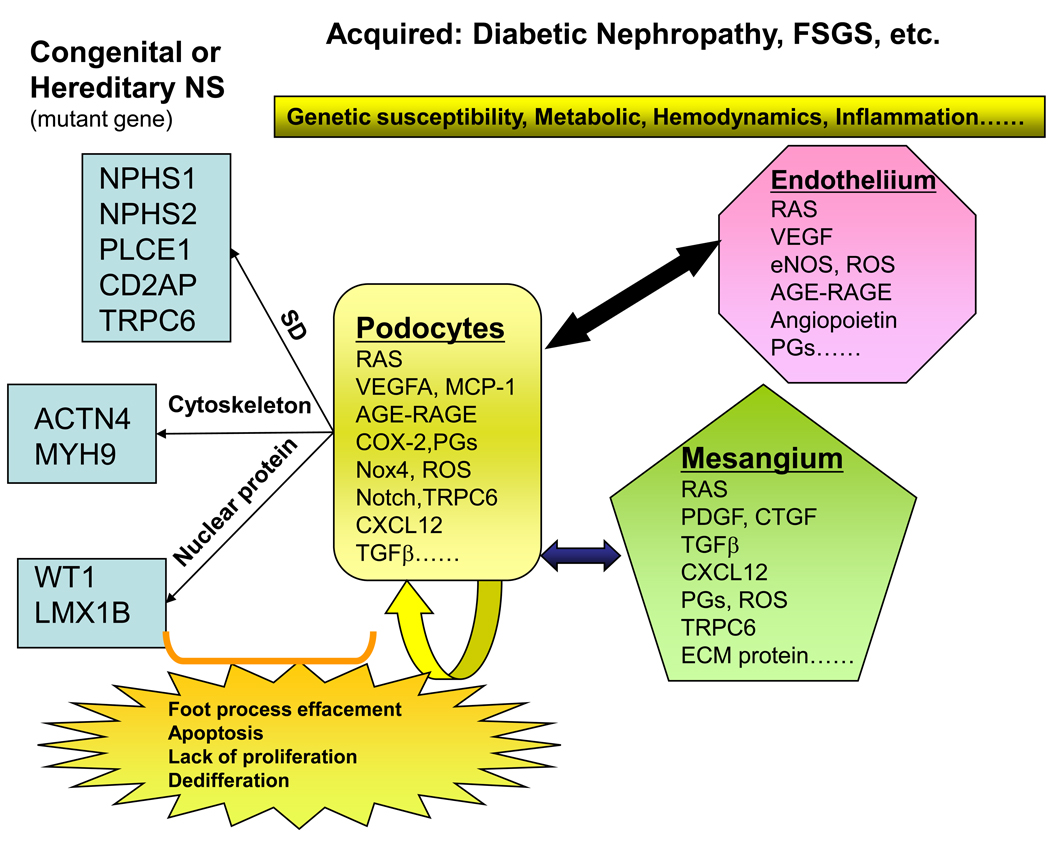Fig. 1.
Podocyte disorders in hereditary and acquired proteinuria syndromes. Representative mutations linked to hereditary proteinuria syndromes are shown in the left. An individual’s genetic profile may lead to an increased susceptibility to development of podocyte diseases; environmental factors, including metabolic, homodynamic, immune, infection and inflammatory alterations, could trigger the onset of the diseases. Injured podocytes could spread injury to the healthy ones and other adjacent/ distant cells, like endothelial and mesangial cells in a vicious cycle. Many molecules/proteins are involved in the “cross-talk” between cells during the disease progression. Injured podocytes may have foot process effacement and slit diaphragm alterations as an early manifestation of injury and subsequently undergo detachment, apoptosis, impaired proliferation and de-differentiation.
SD: Slit diaphragm complex; RAS: renin-angiotensin system; AGE: Advanced glycation end-products; RAGE: receptor for AGEs; PGs: prostaglandins; ECM: extracellular matrix; FSGS: focal segmental glomerular sclerosis; NS: nephrotic syndrome.

